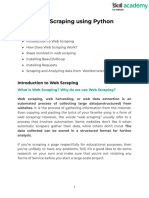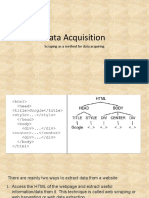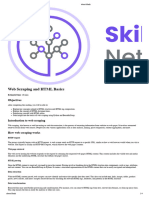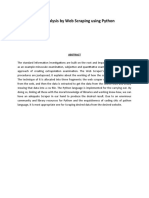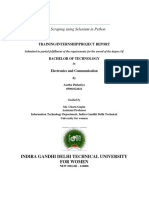0% found this document useful (0 votes)
5 views3 pagesQuick Guide Web Scraping With Python
Uploaded by
2458737390Copyright
© © All Rights Reserved
We take content rights seriously. If you suspect this is your content, claim it here.
Available Formats
Download as DOCX, PDF, TXT or read online on Scribd
0% found this document useful (0 votes)
5 views3 pagesQuick Guide Web Scraping With Python
Uploaded by
2458737390Copyright
© © All Rights Reserved
We take content rights seriously. If you suspect this is your content, claim it here.
Available Formats
Download as DOCX, PDF, TXT or read online on Scribd
/ 3


